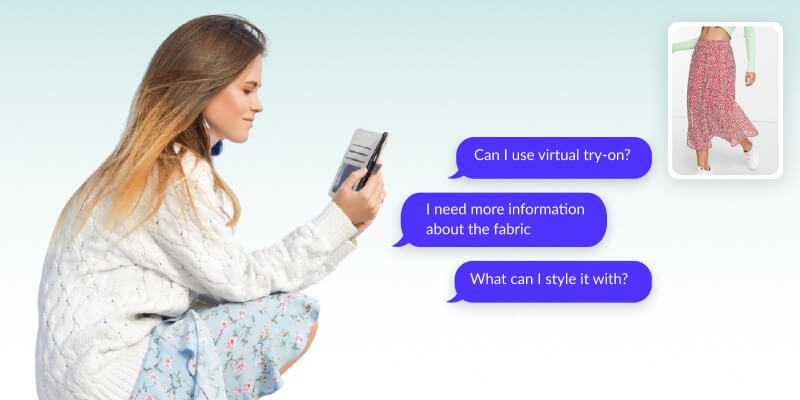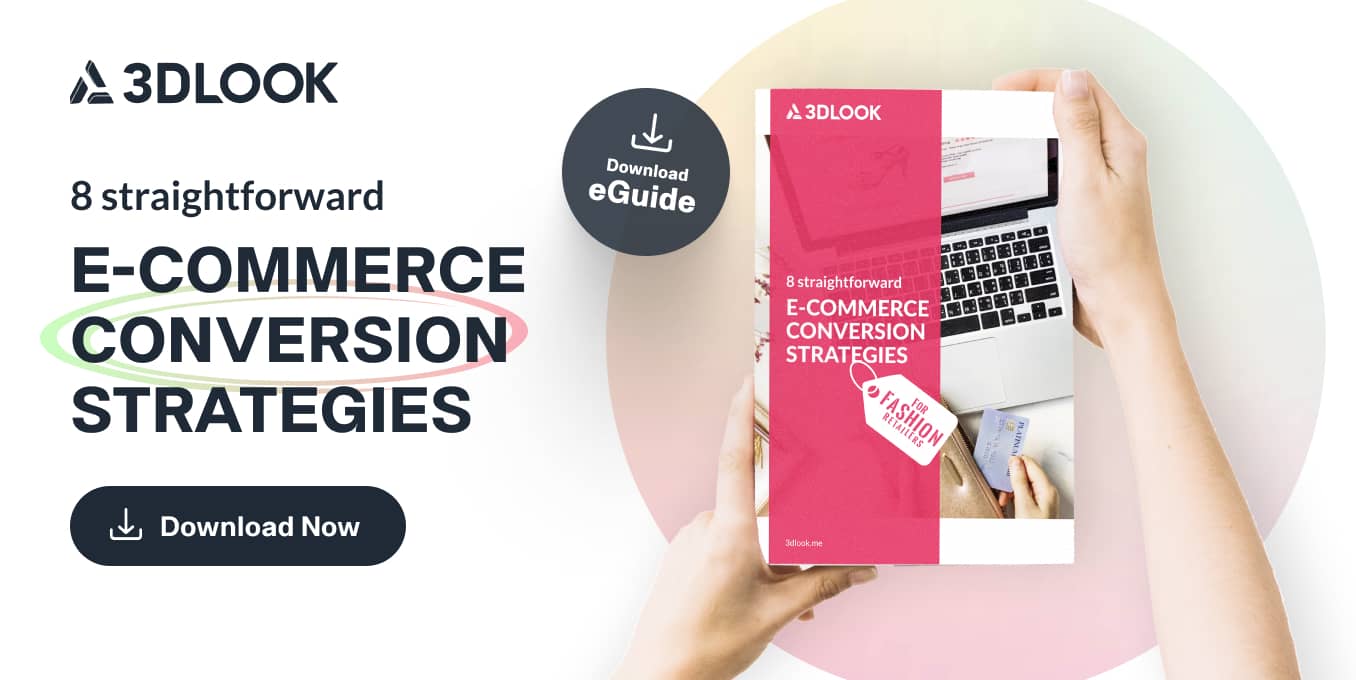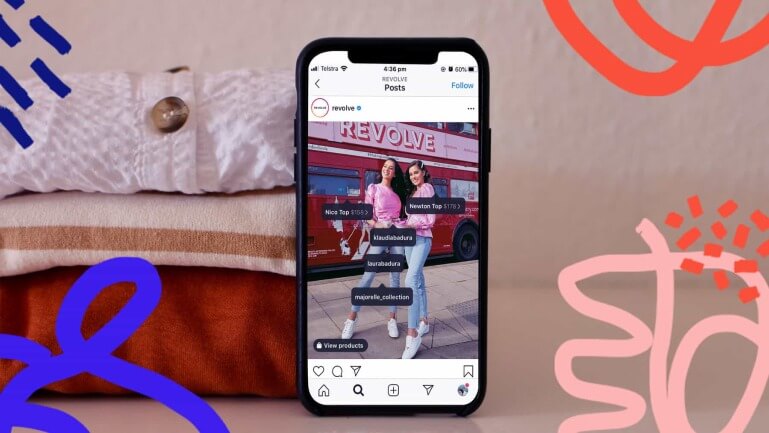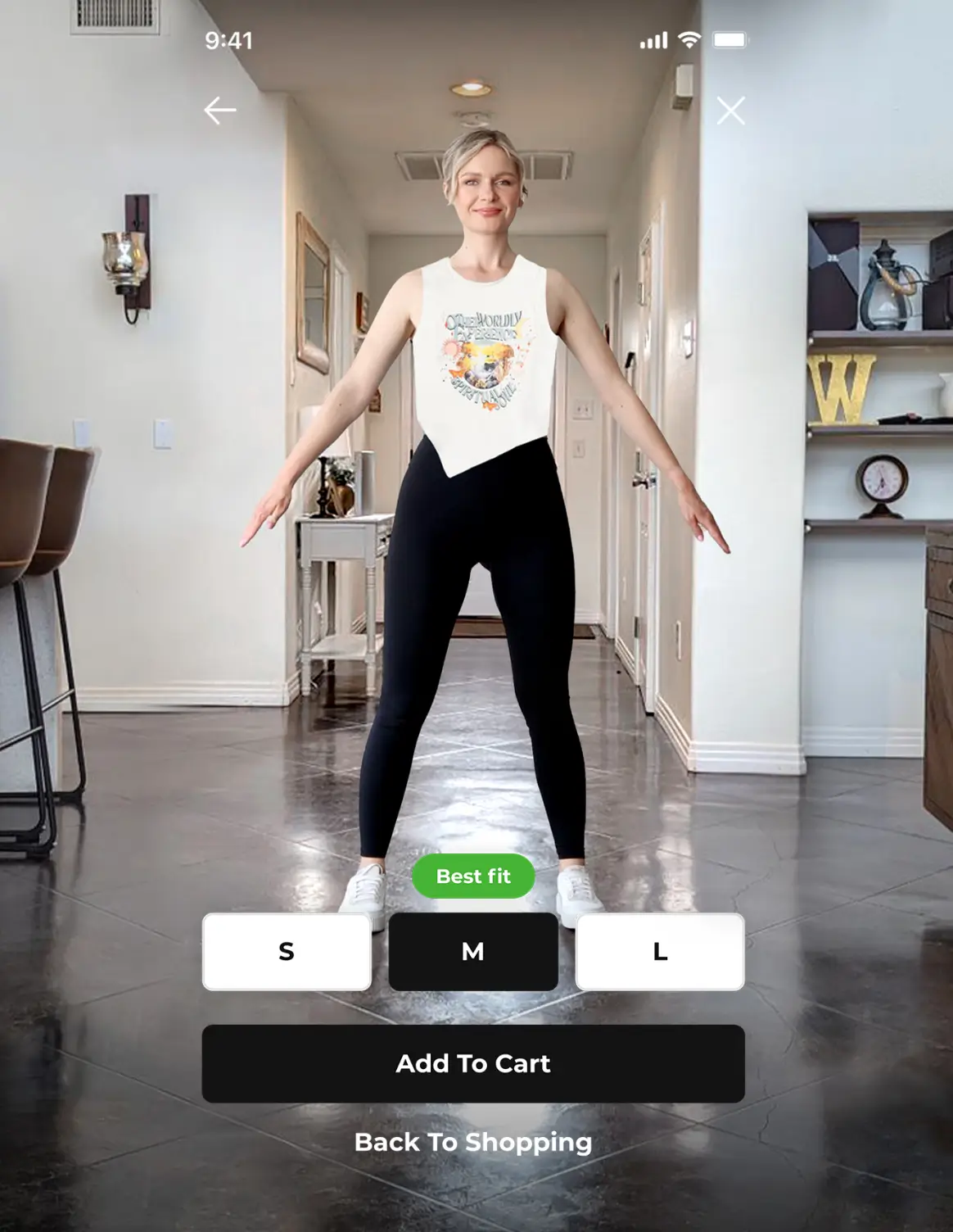On average, just 1.8% of visitors to fashion e-commerce stores make a purchase. Following these top tips, retailers can convince customers to browse for longer, increase their chances of securing a sale, and encourage customers to return time and again.
According to Littledata, 49 out of every 50 customers that visit a style and fashion e-commerce store leave without purchasing anything. There is currently a conversion rate of just 1.8% across the apparel e-commerce market. And for those in the bottom 20%, the rate is three times lower.
Today, e-commerce accounts for 22% of all fashion purchases, and the industry will expand by another 32% by 2024, as suggested by the Common Thread Collective. Therefore, fashion businesses must improve the online customer experience, engage visitors and increase checkout conversion.
This article will explain how you can solve consumer concerns that lead to cart abandonment, uncover ways to enhance the customer journey, and explore how to increase checkout conversion considerably by leveraging innovative solutions.
E-commerce conversion hacks: tips to increase your apparel e-commerce conversion rate
The following e-commerce conversion hacks will help online fashion retailers boost sales and keep their clients coming back time and again:
1. Upgrade the customer experience
Extensive product descriptions, detailed FAQs, and a great deal of imagery are necessary for prospective buyers. A lack of information inevitably leads to lost sales.
Retailers should focus on enhancing the consumer journey by using innovative technologies such as augmented reality, which provides a personalized way for customers to explore different clothing options. In turn, this can lead to a more secure buying process.
Based on Threekit’s research, 3D technology can increase conversion rates by up to 40%, and 71% of customers are willing to shop more frequently if AR technology is included in their shopping journey.

Solutions like YourFit, which combines a size recommendation and a virtual try-on solution, offer customers a photorealistic simulation of how clothes will fit and look at their bodies, using a three-dimensional avatar based on their unique body measurements.
Since utilizing YourFit provides customers with confidence about the size and fit of the products they are interested in, retailers like 1822 Denim have already seen a fourfold boost in sales.
2. Make shopping more personalized
With up to half of all purchases motivated by personalization, retailers must learn as much about their customers as possible.
Consumers make purchasing decisions based on a host of factors, including size, fit, style, color, print, trends, location, age, gender, ethnicity, and more. Through more relevant and varied data, retailers can improve their marketing campaigns to increase the likelihood that potential consumers will visit, browse and ultimately convert by displaying products that attract their attention.
Moreover, plus-size, disabled, and the LGBTQ+consumers are often overlooked. Small changes, such as captioned videos for those with hearing impairments or adding extra product filters, such as ‘gender nonconforming,’ will make it far easier for customers to browse relevant products and find products they want. Not only will this increase add-to-cart rate, but it can provide new data on this growing consumer group for retailers to create and tailor bespoke shopping experiences.

With 3DLOOK’s contactless in-store body measuring solution, menswear retailer Tailored Brands gained information on their clients’ shape and measurement distribution. According to the received data, 65% of their buyers have an oval or trapezoid body shape, which will help the brand tailor future products and create in-demand outfits.
As the scale of e-commerce retail expands, the body data collected by forward-thinking brands will enable them to provide customers with a storefront customized for each client and contains products tailored to their bodies, personalities, and tastes.

3. Utilize social media window shoppers
While everyone knows the importance of social media’s contribution to building confidence and creating excitement, many brands fail to use it to its maximum potential.
Facebook and YouTube have announced new shopping capabilities, which allow customers to browse catalogs and shop directly on the platform. Retails can categorize products and target customers when they are in the most demanding position in their images and videos.
These functions are becoming increasingly popular: U.S. social trade sales will exceed $36 billion this year, with 35.9% of U.S. internet users making at least one transaction through social media. Facebook is the dominating network for 56.1m potential buyers in this market.
Brands should make sure that they are using their social media channels responsibly, rather than flooding consumers with uninvited messages and frequent product pressures, thus risk pushing them off from purchasing altogether. Concentrate on establishing relationships and adding value instead of selling your brand, and sales will inevitably follow.

- Share customer-centric content that consumers are likely to engage with and share, such as lookbooks and behind-the-scenes photos.
- Analyze what works successfully for competitors, influencers, and industry leaders by following them. What are the most popular posts among customers, and why?
- Communicate with your clients. Reply to comments and mentions, respond to questions quickly, and initiate conversations, but not only about your products.
- Make use of influencers who can promote your products to a significant number of potential buyers and provide social proof.
- Keep tracking the outcomes and make adjustments as needed. With enough data and knowledge, it will be evident how social media efforts affect conversations, clicks, and conversions.
4. Handle shipping and returns adequately
Although the bulk of orders are delivered to customers’ homes, many choose alternate fulfillment options. About 9% of consumers prefer to buy online and pick up from a local shop, while Metapack says 10% select local collection points or lockers. Retailers may enhance conversion by up to 38% by providing delivery alternatives that are convenient for customers.
But the cost is higher. Not only do 35% consider this the most critical factor to consider, but 41% say that free shipping in the aftermath of the epidemic is even more vital as we buy more online.
With 81% of consumers requesting a smooth return process, businesses generally need to keep their returns free to succeed. This approach can increase add-to-cart rate, but it comes at a considerable financial cost.
Retailers can solve this by fixing problems such as poor size, employing creative solutions to enhance customer experience, and reducing the likelihood of issues resulting in returns.
For example, 1822 Denim provides free returns to customers who purchased using the YourFit size recommendation widget. The denim retailer’s return rates have dropped by 30%, while conversions have increased fourfold, thanks to accurate, data-driven size suggestions.
Optimize your conversions to increase sales
An e-commerce store may turn customers off for a variety of reasons. According to Sleeknotes, 55% of people have backed out of a purchase because of additional checkout fees, 21% because of ballpark pricing, and 17% due to a lack of trust.
Those looking for how to increase store conversion should start by identifying the problems that consumers are having and figuring out how to fix them, whether that means rethinking the user experience, adding more delivery options, or enhancing personalization throughout the customer journey.
Discover more e-commerce conversion strategies in 3DLOOK’s latest eGuide below. Download now!


